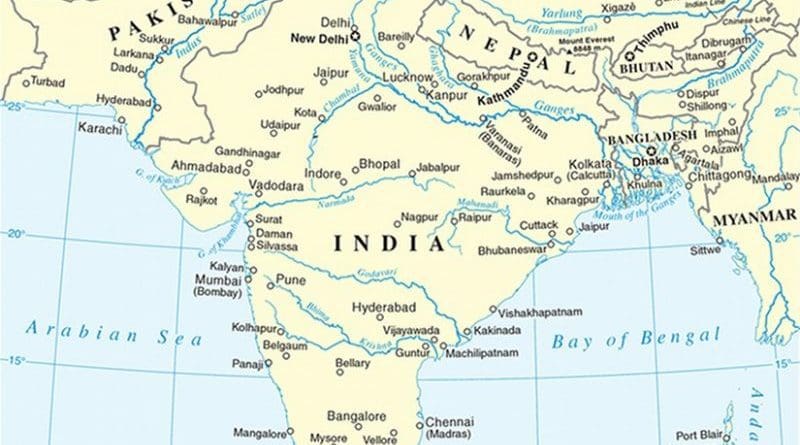BMD And MIRV Technology In South Asia And Implications For Region – OpEd
By Asma Khalid*
The existence of a complex security trilemma between China-India-Pakistan poses a serious challenge to the strategic stability of South Asia. These states share the history of military confrontations and therefore conventional and nuclear development in one country is matter of concern for the other. A number of dynamics, such as conventional asymmetries, nuclear offensive and defensive capabilities, arms race, ballistic missile development and the absence of crisis stability mechanism has increased the fragility of the strategic stability in South Asia.
The regional strategic triangle, and especially two strategic dyads — China-Pakistan and India-China — has made the strategic landscape of South Asia complete with additional contours. In South Asia, the arms race is proportional to the India’s conventional and nuclear developments. To pursue its global and regional ambitions — such as to cover the gap with China and superiority over Pakistan — India has increased its nuclear and missile program rapidly.
Consequently, the recent developments in the Indian Ballistic Missile Defence (BMD) system are a matter of great concern for the competing regional states, especially for Pakistan. Developments in the Indian BMD System and upcoming collaboration of India with US, Russia and Israel has added new dimensions to the regional security equation and pose a serious threat to deterrence stability.
India started the acquisition and development of BMD system in the 1990s to enhance its nuclear capabilities. The Indian missile program is based on Agni and Prithvi series and pursue a exo-atmospheric and endo-atmospheric BMD system. A successful test of the endo-atmosphoric missile, Advance Area Defence (AAD) is a notable step towards the development and acquisition of a two layered BMD system.
On February 11, 2017, India conducted the successful test of high altitude inceptor missile, Prithvi Defence Vehicle (PDV). According to scholars, such developments and India’s pursuit of BMD now has the ability to shake the nuclear calculus of region. Subsequently, it will challenge the very basis of strategic stability and deterrence in the South Asian region.
Developments in the Indian BMD system depict that India is quickly heading towards higher war-fighting capabilities from its minimum deterrence posture.
Although, India claims that it’s enhancing its capabilities to counter China, according to analysts such capabilities will allow India to adopt an offensive strategy over Pakistan. The Indian BMD system will increase instability and Pakistan’s security dilemma. It will force the Pakistan to improve the quality and quantity of its nuclear arsenal and it will force Pakistan to expand its military expenditure.
Other interconnected issues are regarding the effectiveness of BMD and a false sense of security because the BMD system cannot guarantee the absolute interception and destruction of targets. As such, the security dilemma and false sense of security will trigger the crisis instability. However, in the South Asian strategic landscape where a tri-angular relation exists the phenomena of nuclear deterrence will become more complex and result in a major catastrophe.
The Indian pursuit of a BMD system has complicated the security calculations of regional states. It will have spillover effect on its neighboring states thus triggering and consolidating a new arms race in the region. It is imperative for Pakistan to take effective measures to counter the volatility instigated by the Indian BMD. Acquiring or manufacturing their own BMD system is least available option due to economic restraints, so viable options in this regard is qualitative improvements to target the vulnerabilities of the Indian BMD.
In this regard, Pakistan’s surface-to-surface ballistic missile, Ababeel has significant contributions in the defence arrangements of Pakistan. Ababeel is capable of delivering multiple warheads using Multiple Independently target Re-entry Vehicle (MIRV) technology. It is a constructive addition in the Pakistan’s defence. It will facilitate Pakistan to sustain the credibility of its deterrence strategy against the Indian BMD system due to its ability to deliver multiple warheads.
India has increased the vulnerabilities of regional states, thus instigating instability and arms race. Policy options for Pakistan to counter the instability against the Indian BMD system is to quantitative and quantitative improvements in its nuclear and missile capabilities in a way that won’t have an effect on the credible strategic symmetry and avoid an arms race in the region.
*Asma Khalid, Research Associate at Strategic Vision Institute (SVI) Islamabad. [email protected]


No prizes for guessing. She is the same author who came up with a wonderful theory that India threatened Sri Lanka with ballistic missiles and nukes and made them not to buy Chinese JF17 which is marketed by Pakistan.Please hire better authors from a better Institutions provided you have the financial resources.
To justify their continued hold on power the Pakistan military needs external ”enemies” an ‘ and India fits the bill nicely for them. They waste much of their resources to meet the ”threats”. Sheltering terrorists and being in bed with them may eventually destroy Pakistan. The gun that fires in only one direction is yet to be invented. And all those who mindlessly support the generals are also complicit in this regard. The hard working and talented people deserve better.
Forget India, it is always behind China, Russia and the US. Pak can rely on its iron brother China and easily surpass India’s attempts to dominate the region. Pak can rely on chinese superiority!